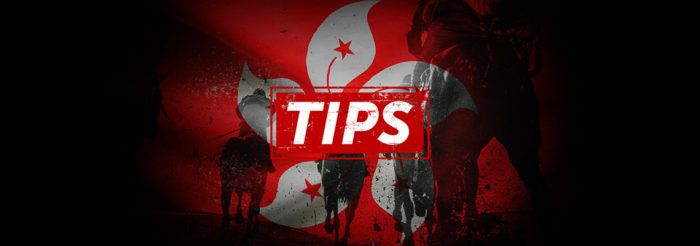How to bet on horse racing
Horse racing betting explained
Horse racing is an exciting sport with thousands of races every year to bet on all around the world. Millions of passionate fans attend the race tracks to watch the horses and jockeys do their thing, but if you’re not familiar with the terminology it can all sound a bit like gobbledygook; ‘on the nose’ and ‘each way’ are a couple of the common terms that we’ll help you understand in this how to bet on horse racing guide, before placing your first bet.
Placing good horse racing bets online depend on a number of factors including bet type, and of course the betting odds. Horse racing odds are displayed in the UK in fractions, so if you’re visiting a track you’ll need to get to grips with these.
But don’t worry if you don’t know your jumpers from your bumpers, or your jolly’s from your outsiders – horse racing betting is easy when you know how. In this guide we’ll walk you through the basics to give you a good understanding about how to place your horse racing bets, and how to enjoy this glorious sport.
Horse racing betting odds explained
First, it is important to understand what horse racing odds are, how they match-up and what they mean; this will ensure that you place smart bets as well as hopefully winning ones!

As mentioned, in the UK odds are expressed as fractions – this is how you will see the betting odds online, and at the race tracks. Betting odds will be displayed as for example 2/1 – this means for a £1 stake a winner will pay you a £2 profit. Not all odds will show with a /1 but you can apply the same rule; as another example with odds of 11/4, every £4 wagered will return £11 profit, so a £10 bet would return a profit of £27.50.
When you place horse racing bets online, you can change the odds to decimal which is common throughout Europe. These would be displayed as for example 2.0, in this case you simply x your stake with the decimal i.e., 2 x £10 = £20, so you would make a £10 profit. These are not always whole numbers but the same principal applies. Odds of 6.5 x £10 = £65, therefore a £55 profit is returned.
How to pick your horse racing bet
Now that you understand how to work out the return you will receive, choosing the odds and horse you want to bet is the next step. Let’s take this 4 horse race as an example:

- Horse A – 1/1 (usually displayed as EVS, meaning evens)
- Horse B – 4/1
- Horse C – 4/1
- Horse C – 9/1
With the above imaginary race, Horse A is the favourite, or as you may sometimes hear ‘the jolly’. You can tell this because the odds are the lowest, meaning it has the highest chance to win. The implied probability of Horse A winning is 50%. This is a simple calculation displaying EVS as a percentage. So if we take Horse B:
Horse B has odds of 4/1, to express this as a percentage we first change it to its decimal form which is of course 5.0. Simply divide into 100 to get the percentage 100/5 therefore horse B has a 20% chance of winning the race (theoretically!)
Horse B and C have the same implied chance to win the race. Horse D has the lowest chance to win and is considered ‘the outsider’ with an implied probability of 10%. You can note that this is a ‘perfect book’ (horse race) as the percentages all add up to 100%.
Although this may seem complicated, it’s not. You don’t need to get bogged down in all the probabilities of winning, it is more of a guide of what to expect in the race. By betting the favourite, there are no guarantees that it will win, and betting winning outsiders will of course return more money for your pocket!
The simple thing to remember is the shorter the odds, the more theoretical chance your horse racing bet has of winning.
What are fixed odds in horse race betting?
If we take the example above, the odds in that race were fixed odds. This means that those are the odds that will be paid out at should your horse win – guaranteed (with the exception of Rule 4, refer to our FAQ’s).

So if you back Horse B at the fixed odds of 4/1 and the price reduces to 3/1 before the race starts, you will still win at the odds of 4/1. In horse race betting we call this beating the price.
The odds, or price of the runners (horses) will fluctuate in the hours before the race, so the fixed odds can change.
There can be a number of factors that affect this; if the trainer suggests that his horse might not be on its best form, the price may drift (get bigger) and the same if the horse is in better for than expected when the price will come in (get shorter). So keep an eye out for moving odds.
What does SP mean in horse racing?
As well as fixed odds, you may see an option for SP. This is short for ‘Starting price’. If you bet at SP, you won’t know the odds until the race has started and if you win, the official starting price (or odds), will be what your bet is paid out as.

What does NR in horse racing mean?
NR stands for non-runner. This means that the horse will no longer be taking part in the race. If you back a horse that later becomes a NR on the day, your stake will be refunded.
What is each way betting in horse racing?
When you bet on horse racing online, you will see an ‘each way’ option available. Each way can also be displayed as e/w or w/p (win/place). An each way bet is effectively 2 separate bets, one for the horse to win the race, and one for it to place. Place means that your selection will finish the race in either position, 1, 2 or 3. Places can sometimes go into 4 or 5 depending on the race type and the number of runners. Odds are either paid at 1/4 odds or 1/5 of odds for the place. Let’s take an example:

Imagine a race with 8 runners where the place terms are 3 places at 1/5 odds.
Now let’s break it down:
Horse X is 20/1 to win the race and you back this at £5 e/w
You are backing £5 at odds of 20/1 for horse x to win the race, and £5 at odds of 4/1 (20/5) for the horse to place in 1st, 2nd or 3rd
If your horse wins you win £5 at 20/1 + £5 at 4/1 = £105 + £25 – £10 (your stake) = £120 profit.
If your horse finishes in 2nd or 3rd you lose the win stake but win £5 x 4/1 = £25 (-£10 stake) = £15 profit.
So instead of losing £10 on a win bet, or on the nose, you will make a £15 profit! You should also note that each way betting will not be available for horse races of 4 or less runners. This is a general rule that will apply over all types of horse races.
What are Head to Head bets in horse racing?
A Head-to-head bet is a special bet that we offer where you bet on one horse against each other. The horses and odds will be pre-selected, and will be with 2 horses that have a similar chance to win the race.
What are the most popular horse racing online bets?
There are a plethora of bets to choose from when betting on horse racing online, the most common bet types in horse racing are:
- Win/on the nose/single – one bet on one horse to win one particular race
- Each way – A win bet and a place bet on the same horse to win, or to finish within the places
- Doubles – 2 selections for 2 different races. The winnings for a double are the odds of the horses x each other. So winnings can be huge
- 3/4/5 fold etc. – A bet made up of more than one horse, horse A from race 1, horse B from race 2 etc. In this case you need all of your selections to win to win anything. You can also place these as an each way.
- Trixie – 4 bets made up of 3 doubles, and 1 treble. You will need three selections to place this bet.
- Yankee – For this bet you need to make 4 selections and 11 separate bets will be placed, 6 doubles, 4 trebles and 1 fourfold will be on
Of course there are many other betting types that you can explore, and much more to understand -so keep an eye out for more of our horse racing betting guides!







